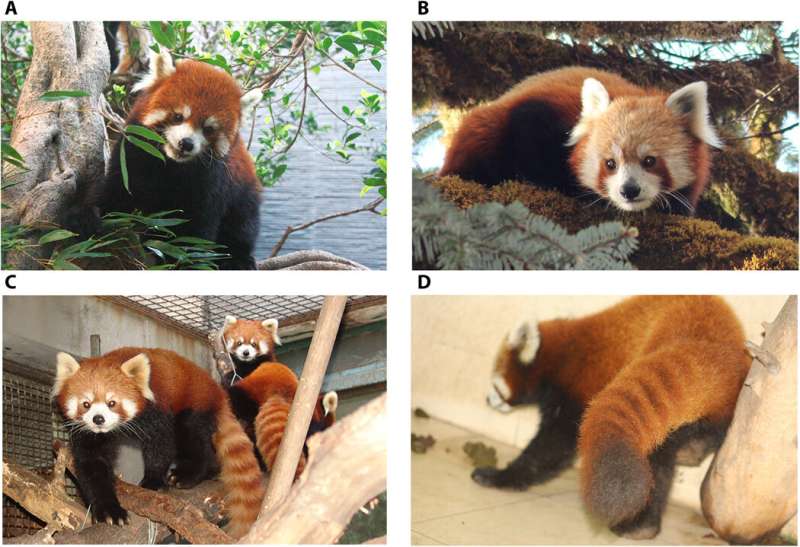February 27, 2020 report
There are two distinct red panda species, according to DNA analysis

A team of researchers at the Chinese Academy of Sciences has found that two varieties of red panda actually comprise two different species. In their paper published in the journal Science Advances, the group describes the genetic study they undertook of the mammals, which are native to the Himalayas and southwestern China, and what they learned.
Red pandas are cat-sized mammals that look more like red raccoons than pandas. They have red coats, masked faces and ringed tails. They live at high altitudes, and like pandas, eat bamboo. They once lived across much of Eurasia, but they are now listed as endangered—their population has dwindled to just 10,000. They live only in the southeastern and southern parts of the Qinghai-Tibetan Plateau. Prior study has shown that there are two varieties of the red panda: the Chinese red panda and the Himalayan red panda. Chinese red pandas are known for having redder faces with less of the white wisps in their fur. Their tail rings are also darker with more white between them. Scientists have wondered for some time whether the two varieties were actually distinct species. In this new effort, the researchers have found evidence that shows that they are, indeed, two distinct species—a finding that could have an impact on efforts to save them both.
The work involved sequencing the genomes of 65 wild red pandas. The researchers collected muscle, skin and blood samples from seven population areas. The analysis was focused on finding differences in DNA base pairs on the Y chromosome. The data showed that not only are the two varieties of red panda different species, but that the Chinese red panda has three populations that are genetically different. It also showed that the line that divides the two species is not the Nujiang River, as previously thought, but the Yalu Zanbu River.
The researchers suggest their findings are important for the survival of both species, because it will help to concentrate specific conservation activities that are best suited for each of them. Also, it will help to prevent interbreeding that could lead to one species overtaking another.
More information: Yibo Hu et al. Genomic evidence for two phylogenetic species and long-term population bottlenecks in red pandas, Science Advances (2020). DOI: 10.1126/sciadv.aax5751
Journal information: Science Advances
© 2020 Science X Network





















